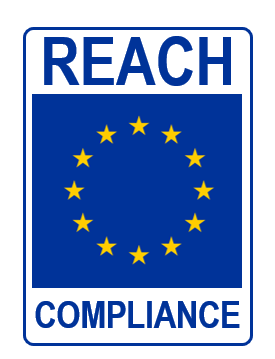EU REACH
November 20, 2020 | Written by GreenSoft Technology, Inc.
Glass and the EU REACH Regulation
European Chemicals Agency (ECHA) clarifies on the EU REACH exemption for glass
 Under the EU REACH regulation, manufacturers may be permitted to apply certain exemptions to substance restrictions for certain substances and applications.
Under the EU REACH regulation, manufacturers may be permitted to apply certain exemptions to substance restrictions for certain substances and applications.
Substances incorporated into ceramic or glass frit is one such application that has been exempted from the registration, downstream user and evaluation requirements of Annex V of the REACH regulation.
This month, in an email received by GreenSoft Technology from the European Chemicals Agency (ECHA), ECHA has clarified the EU REACH exemptions relating to glass substances and articles.
Glass as a substance is exempt from EU REACH Titles II, V and VI
The substance ‘glass’ is exempted from REACH Titles II (registration), V (downstream users) and VI (evaluation) according to entry 11 of Annex V to REACH Article 2 (7) (b). This exemption applies to glass as a substance. Note however, that glass or ceramic frits are only to be exempted from registration if they do not meet the criteria for classification as hazardous according to the CLP Regulation. Entry 11 is explained in further detail in the Guidance for Annex V, available at: https://echa.europa.eu/guidance-documents/guidance-on-reach
Lead or lead oxide is exempt only when fully encapsulated in glass matrix
The presence of lead / lead oxide in a final glass article would in principle be subject to the obligations for substances of very high concern (SVHCs) in the Candidate list, including the Article 33 communication, and SCIP notification obligations, if the SVHC concentration is above 0.1 % (w/w), see http://echa.europa.eu/candidate-list-obligations
However, if the lead glass is a different substance – where the argument is that the lead is bound to the glass in such a way that the resulting UVCB glass is a new substance – then the presence of that substance is not subject to the communication obligation. This is the case, for example, of lead used in glass frit within electronic resistors, which is also exempted from EU RoHS limits under EU RoHS Annex III exemption 7(c)-i.
Note however, that if there is any unbound lead in the glass that the user can be exposed to, then that lead would need to be communicated to the recipient. For example, lead present in paint or coating applied to a glass article would not qualify as REACH exempt.
EU RoHS exemptions do not automatically apply as EU REACH exemptions
Note that the obligations related to substances in articles under REACH apply irrespective of other legislative requirements. For example, an exemption for an electronic component under the RoHS Directive does not automatically mean an exemption under REACH. Each exemption from the REACH obligations has to fulfil the criteria set out in the REACH Regulation.
GreenSoft Technology helps with EU REACH compliance
GreenSoft Technology works closely with government bodies such as ECHA to understand and analyze regulation requirements and how they pertain to our customers.
We provide EU REACH data services to help manufacturers ensure that the products they place on the EU market are compliant with REACH obligations.
GreenSoft Technology can manage your entire compliance process, including coverage for the EU REACH SCIP Database, by performing data collection, data validation, substance calculations and report generation as part of our EU REACH data services.
Learn more about our EU REACH data services by contacting us.




